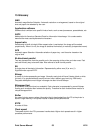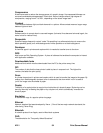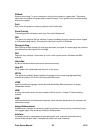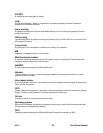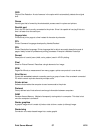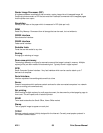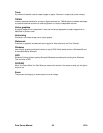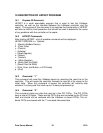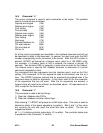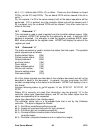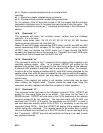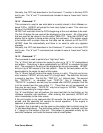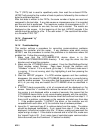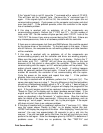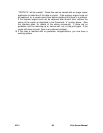
A741 64 Print Server Manual
bit 2 = Copier computed checksum error in command from
controller.
bit 1 = Status from copier violated timing constraints.
bit 0 = Command from controller violated timing constraints.
So, for example, if the YY byte had a value of 08, this means that the controller
computed a checksum error in the status that was just sent from the copier. This
byte can be cleared by issuing an “i” command as described in the Command: “i”
section.
16.9 Command: “v”
This command will return the controller version number from the Littlebear
controller. It is in the form:
Version return bytes (hex): XX XX XX XX XX XX XX MJ XX MN Success
retrieving version major:MJ (#) minor:MN (#)
Where XX are HEX values representing ASCII letters, and MJ and MN are HEX
values representing ASCII numbers for the major and minor version numbers.
LBTEST does not decode the ACSII letters but it does decode the ASCII
numbers and displays them on the second line. Decoded, the current HEX bytes
returned from this command form this ASCII line: #.#
16.10 Command: “w”
This command is similar to the “r” command, but is used to write a register in the
controller address space. After “w” is entered, LBTEST will prompt for the
address to be written, then will prompt for the value to be written to the address.
A two-byte HEX address is expected, then a one-byte HEX value. For example,
to write a B4 to the register at address 8081h, enter 8081 when prompted for the
register value, then enter B4 when prompted for the value to write to this register.
To confirm the value just written, you may issue the “r” command to check the
current value.
However, if the register just written is not writable, invalid data may be seen
when reading the register back. Caution should be used when using this
command, as many registers will affect the controller or copier operation.
16.11 Command: “d”
This command writes test data to the Littlebear on-board FIFOs. LBTEST will
prompt for how many bytes are to be written. This value can be from 0 to
200000 decimal. LBTEST will write data to the FIFOs beginning at the address
currently pointed to by the controller. The test data starts with 00 HEX and
continues until FF HEX. At this point, the data starts over at 00 HEX. In order to
see what data was actually written to the FIFOs, it is necessary to use the next
command (Read FIFOs). Note that LBTEST will display that a register is being
written during this command. This register needs to be written with a certain
value so that data is not clocked out of the FIFO so that it can be read back using
the “f” command. LBTEST does this automatically and there is no need to write
any registers manually.



